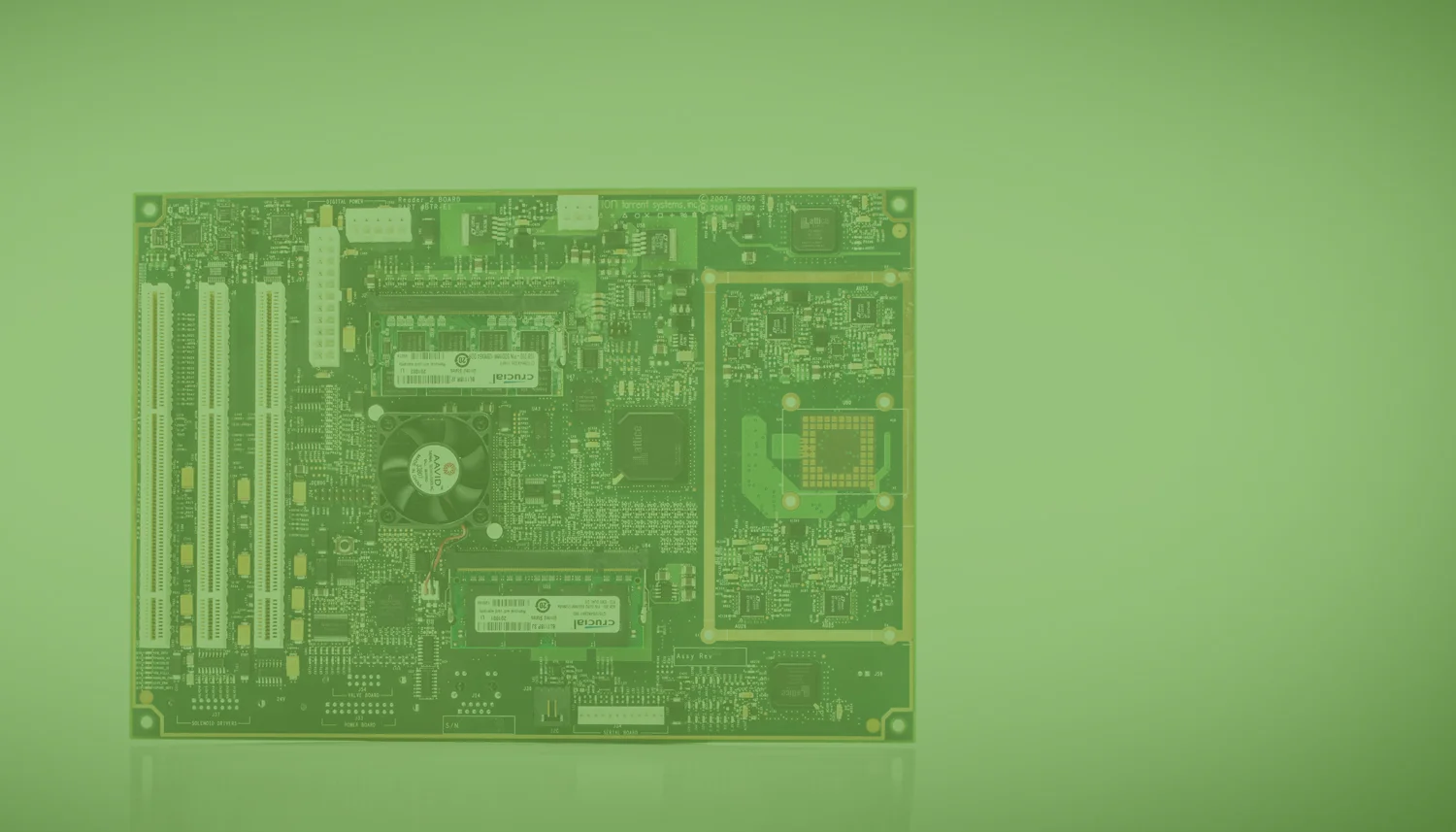Our experience with analog to digital conversion (ADC) ranges from sub-Hertz to multi-GHz.
A time-of-flight mass spectrometer provides an example of high speed A/D conversion, working at a sample rate of 3 GHz. The analog front-end for this digitizer was developed using RF circuit board design techniques and components and its performance was verified with a 40 GHz network analyzer. Considering the dielectric absorption properties of FR4 above 1 GHz, the board was built as a hybrid construction of Rogers high frequency circuit board materials and FR4. By using a composite of the 2 board materials, performance and cost were optimized. The network analyzer confirmed that signal response was essentially flat throughout the required frequency range and up to several times the Nyquist frequency.
Timing performance is critical in a time-of-flight mass spectrometer where time of arrival at the detector is measured in picoseconds. For our primary clock source, we chose a 3 GHz surface acoustic wave (SAW) oscillator exhibiting just 120 fs jitter. Digitizing at such a high speed creates its own stress in the receiving circuitry, which must handle 24 Gbits/sec. We used an FPGA to receive the A/D data stream, perform the averaging and store the results. The FPGA also provided a serial port to offload data to a computer for further processing. A local CPU handles device management, including offset and gain controls for the front-end amplifier.
Lower speed A/D converters feature more dynamic range than the 8-bit or 10-bit flash units used above 1 GHz. One of our recent designs used four 16-bit A/D converters operating at up to 250 MHz. The sensor for this instrument was similar to a CCD imager except that its ”picture elements” were ion-sensitive FETs instead of photonic detectors. Each sensor channel had a bandwidth of 40 MHz so we used the A/D converters to over-sample the analog signal and average readings for improved SNR. The clock source was a crystal oscillator with sub-psec jitter followed by a digital synthesizer with just 850 fs jitter. This provided sufficient clock accuracy to preserve the full dynamic range of the A/D converters. Noise was a particularly difficult problem in this design. The sensor outputs were quite small, so Johnson (white) noise was an important factor. Despite the wide bandwidth of the system, Johnson noise was held to 20 uV RMS, which is very close to the theoretical limit. Our client’s experiment had a long observation time, so this brought 1/f noise into play. Careful attention to device specifications and passive component materials selection limited the effects of 1/f noise and achieved a good result.
Thermal and photonic infrared spectrometers share a common characteristic with high quality music systems. They both work in the “audio” frequency range from 20 Hz to 20 KHz and both require exceptional dynamic range. An example instrument is a Fourier Transform Infrared (FTIR) spectrometer. For these instruments, the data acquisition card provides the analog front-end to properly bias the detector and amplify its signal. We pay careful consideration to maintain the overall electronic noise to be less than the detector noise. Data conversion is typically 24-bits at a sample rate up to 200 KHz. An issue that all of these detectors suffer is consistent performance from device to device. Some detectors are matched well enough that simply providing a programmable gain amplifier (PGA) is sufficient to accommodate these variations. For other detectors, such as MCT, the variations are more significant and require that the detector’s bias current and offset voltage be adjusted. Traditionally, these adjustments have been made manually, which is both costly and time consuming in a production environment. We have developed an automated method, using DACs and ADCs controlled by the system CPU to calibrate the MCT without the need for user intervention. Not only does this process reduce production cost, but it allows the system to initiate a sensor calibration in the field to ensure maximal performance.
At the low-end of the sample rate spectrum, Presco developed the electronics package for a measurement while drilling (MWD) application. MWD is a technology used to transfer sensor data from the drill head up to the surface, which might be more than 25,000 feet distant. The communication channel is based on acoustic pulses transmitted through a mud slurry used to pressurize the drill stem and clear debris from the cutter. Unfortunately, this acoustic channel operates in the presence of huge noises from the slurry pumps and from the cutter head. We combat this problem through a combination of data compression, secure signaling techniques, and careful analog design of the front-end circuits. The communication channel operates at less than 1-bit per second, but this is sufficient to relay all of the sensor readings periodically to the surface. The receiver card uses Bessel filters (constant time delay) to preserve the waveform shape and help achieve a SNR of 105 dB verified by an end-to-end test.




